new posts in all blogs
Viewing: Blog Posts Tagged with: Interview Alert, Most Recent at Top [Help]
Results 1 - 7 of 7
How to use this Page
You are viewing the most recent posts tagged with the words: Interview Alert in the JacketFlap blog reader. What is a tag? Think of a tag as a keyword or category label. Tags can both help you find posts on JacketFlap.com as well as provide an easy way for you to "remember" and classify posts for later recall. Try adding a tag yourself by clicking "Add a tag" below a post's header. Scroll down through the list of Recent Posts in the left column and click on a post title that sounds interesting. You can view all posts from a specific blog by clicking the Blog name in the right column, or you can click a 'More Posts from this Blog' link in any individual post.
.jpg?picon=3333)
By:
Lauri Fortino,
on 10/29/2014
Blog:
Frog On A Blog: The Blog Of Children's Picture Book Author Lauri Fortino and Her Friend Finley
(
Login to Add to MyJacketFlap)
JacketFlap tags:
author interview,
children's picture books,
Writer's block,
Suzanne Bloom,
Picture book illustrators and illustrations,
Picture book authors, children's book authors,
Interview Alert,
quiet story,
Add a tag

Author/Illustrator Suzanne Bloom
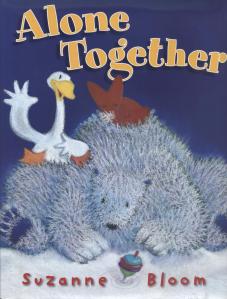
Suzanne’s Newest Book
Welcome author/illustrator Suzanne Bloom for the final post of our four-part series. If you are a new or aspiring children’s picture book author (or illustrator), I hope you have found some inspiration and encouragement in the last three posts, and I hope that continues today. This week I ask Suzanne about quiet stories, writer’s block, and how to keep from getting discouraged.
I discovered I have something in common with Suzanne, besides our love for picture books. We have both been told by editors that our work is quiet. I wasn’t quite sure what that meant the first time I heard it. Is that good? Bad? What? Since the editor who told me that my story was quiet didn’t seem interested in acquiring it, I surmised that quiet must be bad. And if that’s the case, then my story must be bad, and my writing style must be bad, and maybe I’m not cut out to be a picture book writer. See how easily that self-doubt creeps in?
What I have learned since then is that quiet doesn’t equal bad. It is a certain style of writing, and a lot of my work is written in that style, but it’s not bad, it’s just harder to sell to today’s publishers, who seem to want quirky, funny, quick-paced, action-packed, stories. That being said, quiet books are still being published, just not as much. And if you truly want to, you can rework your story into something a little less quiet.
Suzanne, what does an editor mean when he/she says a story is quiet? And how do you feel about quiet stories?
Is it quiet because nothing happens? Do your characters have a problem to solve? Is there a beginning, middle and ending? Have you left space for the reader to make discoveries? What distinguishes your story from the mile-high pile of other manuscripts?
A formidable editor said, in a tone I couldn’t pin down, “You write quiet stories.” Was she kindly dismissing me? Maybe. But, being the foolish optimist, I chose to interpret it as a definition. Yes, indeed! I write quiet stories. My stories are about the little bumps on the road of friendship. They are about friends working things out. They hold moments of emotional truth for the listener and the reader. Think about The Quiet Book (by Deborah Underwood). Deborah Underwood’s “list” text coupled with Renata Liwska’s illustrations is absolutely delicious. It’s sly and tender and true. As visual learners, children look at books more carefully than adults do. This is a boon for illustrators who can amp up the level of detail suggested by the text.
Thank goodness for editors. We need them as surely as they need us. A manuscript needs a champion to shepherd it though the gauntlet of financial decisions, list requirements and the multitude of other manuscripts.
Yay, there is a place for quiet picture books in the world. Now, for those of you who get writer’s block, you’re not alone. We will all be afflicted with it from time to time. And we all deal with it in our own ways. Personally, I tend to wait it out for a while. I will often read and reread everything I have written for that story up to that point over and over again until I get unstuck. If that doesn’t work, then I’m usually done for the day. Let’s see what Suzanne recommends.
Suzanne, how do you combat writer’s (or illustrator’s) block?
Is it inertia or page fright? No matter. Cook something, clean something, completely reorganize your kitchen cupboards, wax the car, weed the garden, walk the dog, conduct a search for the best carrot cake in a four state area, read every writer’s blog you can find, think about starting a blog, open the fridge 8 or 9 times to see if anyone made you something yummy.
Fill your days with Productive Procrastination Projects until you can no longer stand the avoidance, and think maybe that little opus on your desk or PC looks like a better option. Write around the block – scribble, doodle, sketch until that shaky, snaky line looks like an idea.
Alas, that idea may have a mind of its own. More than once the story I started gets elbowed aside by one that’s more insistent or fully formed. In the schoolyard that is my brain, my stories do not stand in a straight line. Oh no, they jostle and shove and argue over who is the line leader, except for that pouty one in the back who refuses to say a word.
Great advice, Suzanne! Now, how do you keep from getting discouraged in the highly competitive world of children’s picture book publishing?
On this emotional and professional roller coaster, there’s a nasty twist called the Spiral of Second Guessing followed by the Plummet of Self Worth. It seems to last forever but is over pretty quickly. Ride it out.
At the beginning of every project and sometimes again in the middle it becomes clear that I’ve forgotten how to draw and write. This story stinks and why would anyone ever read it? And it doesn’t even matter because who cares, anyway!
We are so hard on ourselves.
When I get discouraged, I call someone who loves my work and is not a family member. I call a treasured writer friend. We commiserate and whinge a little but then as good friends do, we remind each other of our successes, dedication, and how we are so much more suited to this than being the CEO of a Fortune 500 company or any other of many, many options.
If you are a writer, illustrator, or both, thank you for working to put something beautiful into the hands of children.
Thank you, Suzanne, that last line sums it up perfectly. That’s really what it all comes down to, if writing children’s picture books is in your blood, if it’s a part of you that you can’t imagine being without, and you long to put something beautiful into the hands of children (and there’s nothing more beautiful than a picture book), then don’t give up, don’t quit, don’t get discouraged, your dream can come true. You can be published. Keep writing, keep submitting, keep improving, and keep the faith. Believe me, I know!
Suzanne Bloom was born mid-century in Portland, Oregon, which accounts for her love of overcast days. She moved to Queens, New York in time to finish kindergarten. Her first book We Keep a Pig in the Parlor was published in 1988. She has authored and illustrated many more books since then including The Bus for Us (2000) and the popular Goose & Bear series, which includes A Splendid Friend Indeed, Treasure, What About Bear, Oh! What A Surprise!, Fox Forgets, and her latest, Alone Together. She has been given a Theodor Seuss Geisel Honor Award and has been selected for the Texas 2×2 list of 20 best picture books (twice). She currently lives in upstate, New York with her husband in the house they built 34 years ago, down a dirt road and on a hillside. She has two grown sons, one cat, and one dog. To learn more about Suzanne, please read the interview I did with her back in 2010, or check out her website: www.suzannebloom.com.

{Suzanne’s First Drawing, Age 3} I confess. It’s true. Before I wrote, I drew! An artist at three, marking the page – my dad and I were circles with little circle eyes. We looked like a jellyfish family. We all are artists, first. Little by little other activities catch our interest and we move on. But not always. I found more success drawing and painting than adding and multiplying, or dancing or playing sports. According to report cards from elementary school, I was a pleasure to have in class, though not working up to potential. Indeed, who among us works up to potential? I remember learning to read. Sprawled out on the ugly rug in the living room, looking at the funny papers spread before me, I watched in amazement as the squiggly lines shaped up into a word. The word was “Scamp”, son of Lady and the Tramp. And with that, the funny papers became my magic carpet. My gateway books were Goldens. So Big!, Animal Babies, and Mr. Dog still sit and stay on my book shelf to remind me that my collection began even before I was reading on my own.



I recently interviewed author/illustrator Harriet Muncaster to learn more about her debut picture book I Am A Witch’s Cat, which was published this summer, but is perfect for Halloween. Her book contains fascinating scenes filled with incredibly detailed miniatures. I was an instant fan from page one. And the story is clever and sweet. It’s about a child who claims her mother is a witch (a good witch) and she is a witch’s cat, and she goes on to show the reader all the reasons why she knows her mother is a witch. But more than that, the story is about a special relationship between a child and a parent. Please read the interview and get to know rising star Harriet Muncaster.
Q. Please tell us a little about yourself and how you got started in children’s books.
HM. Hi Lauri, I am so glad you like my book and thank you for having me on your blog! I have always loved making, drawing, reading and writing so I always knew I wanted to do something visually creative. However it wasn’t until we went on a school trip to an exhibition of James Mayhew’s work that I realized I could channel my creativity into children’s books. The thought had never actually occurred to me before and I had never been told that it was possible to do an illustration course at university as opposed to just a general art course. I think I was about 16 or 17 at the time. I absolutely loved James Mayhew’s work at the exhibition and it opened my eyes to the possibility of becoming a children’s book illustrator myself. I did a foundation course in art and design after school and that made me more certain that illustration was the right path for me to take. After that I did a degree in illustration and then an MA in Children’s Book Illustration at Anglia Ruskin in Cambridge. We were given some good exposure on my MA course – our work got taken out to Bologna Book Fair and that is where my Witch’s Cat book was spotted! In fact, it was a project I did on that course.
Q. You have a unique artistic style, which is evident in your picture book I Am A Witch’s Cat (which is gorgeous, by the way). How would you describe your style?
HM. Thank you! I am not really sure how I would describe my style to be honest. I kind of feel like I fell into it without meaning to. I was on my MA course and thought I would try out a book by making work in 3D out of paper and photographing it. I had done something similar before on my degree course where I made a paper model of a Snow Queen’s room. It was just the room though, I hadn’t taken it as far as putting characters in at that point. I guess that was my first ever foray into 3D illustration! So I thought I would try a similar technique to illustrate a book on my MA course. It went down quite well, I actually got highly commended for it in the Macmillan prize so my tutor suggested I do my next project in the same way. That project turned out to be Witch’s Cat, and it went from there. I enjoyed doing it because I absolutely LOVE making tiny things and I enjoy playing with lighting to get different atmospheres. (I actually think I prefer making physical things to drawing, it feels more natural to me.) I wanted it to be a warm book with an autumnal feel but also a bit magical. I watched a lot of the old Bewitched episodes while I was creating it.
So overall, to answer the question, if I were to describe my style in Witch’s Cat it would be: paper and fabric room sets with cut out characters, photographed with (hopefully!) warm lighting to give an autumnal feel.

Q. Can you tell us a bit about your process from beginning to end when you created I Am A Witch’s Cat?
HM. Well, I think I went about it in a pretty ordered fashion. Even though I am a messy person in real life, when it comes to work I find I have to be very ordered and focused. Firstly I thought of the story. Then I thumbnailed the whole book, did a dummy book and then started making the final art! To make the final art I made miniature scenes- about dollhouse sort of size, out of paper and card and bits of fabric and then photographed them.
These are some of the very first sketches of Witch’s Cat from my sketchbook.

And here are some work in progress shots when I was making the 3D scenes.




These are all the food boxes and tins for the supermarket scene.

The first finished version of Witch’s Cat (the one I created on my MA course) had more of a scrapbook feel to it but that got changed for publication.

Q. Photography plays a large part in your artwork.Would you consider yourself a photographer too?
HM. I’m not sure actually… I suppose I am in a way! I don’t feel as though I am worthy of the title ‘professional photographer’ though as I don’t feel I know enough of the technical stuff. Also I don’t own all the equipment!
Q. Do you personally create all of the miniatures you use in your artwork? (I especially love the tiny books I saw on your website!)
HM. I try to make as many of the miniatures as I can out of card, but I think sometimes it adds interest to put an actual miniature in there like a real dollhouse lamp or something. Sometimes, if I want to make something look properly 3D I will make it out of Fimo. Or sew it! Like these little soft toy cats in Witch’s Cat.

Q. I Am A Witch’s Cat is a perfect pick for Halloween. Was that your intention when you created it?
HM. No, I didn’t specifically think of Halloween funnily enough! But I was intending it to have an autumnal feel. I can see now though that it works well as a Halloween book!
Q. And how popular is Halloween in your part of the world?
HM. Halloween was never a big thing at all for me growing up. We weren’t even allowed to go trick or treating in my family! Halloween was a bit of a non-event in my house. It wasn’t until I went to university that I discovered that some people do like to celebrate Halloween. I’ve been to a few Halloween parties since. It’s definitely not as big a deal in the UK as it is in America though – Nowhere near!
Q. What projects are you working on right now?
HM. I have been working on a range of books about a princess called ‘Glitterbelle’ with Parragon publishing. I think they are coming out in January – or sometime round then anyway! I have just illustrated them, not written them and some of them are activity books. They are all done in my 3D style. I have also been working on a second Witch’s cat book called Happy Halloween Witch’s Cat which will come out next July. And then there are some other picture books I have been working on too but I can’t say much about those yet!
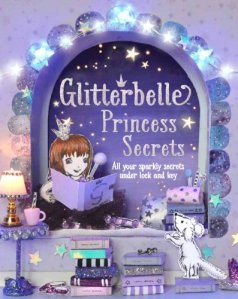
Q. Why do you believe picture books are important?
HM. I cannot imagine a world without picture books! Well, I can, but it would be a very boring world. I absolutely adore them because they are like little worlds you can just escape into. My absolutely favourite picture books are the Dorrie books by Patricia Coombs. I love the atmospheres they evoke. Of course there are other reasons why picture books are so important – like the use of them for teaching to read, introducing children to ideas, addressing important issues in a way children can relate to, provoking exploration and questions, bonding over bedtime reading etc… but that is my reason for loving them, the escapism and inspiration they provide. Also, writing and illustrating picture books is like being the director of a mini play/film. You have complete control to create a whole new world.
Q. Where can fans go to learn more about you and your work or to simply connect with you?
HM. I have a blog: www.victoriastitch.blogspot.com.
Q. Any closing thoughts or words of wisdom?
HM. I don’t think I actually have any words of wisdom! I have just always done what I love and luckily it has led me to being able to do it as my full-time job. Maybe I would say: listen to criticism, use it to help you become a better illustrator/writer/artist/(insert word here) but ultimately do what inspires you and what you believe in. Don’t let anyone change that.
Oh my goodness, I love the tiny orange and yellow quilt on the bed, and the tiny food boxes, and the tiny plush kitties! Thanks for sharing, Harriet, and much success with all of your books!



Author/Illustrator Suzanne Bloom

Suzanne’s Newest Book
Please welcome back author/illustrator Suzanne Bloom for week three of what will be a four-part series designed to encourage new and aspiring picture book authors as they navigate the perilous path to publication.
Today’s topic is Rejection, with a capital “R”. If you’ve already been sending out submissions and have received rejection letters (or e-mails) back, it’s a major letdown. I’ve been there. I’m still there. But as cold as the rejection feels, you must try try try not to take it personally. I know you poured your heart and soul into your story. But always keep in mind that publishing is a business and publishers are companies. And just like any company, publishers must make money in order to stay in business. Since publishing companies receive hundreds of submissions each month and thousands per year, and they cannot publish them all, they are very selective and choose what they believe has the potential to make money. That doesn’t mean your story wasn’t good. It just means that it wasn’t right for that publisher. Even veteran authors still get rejections.
Several years ago, when I was feeling particularly bummed over yet another rejection, I asked an anonymous editor if editors realized they hold authors’ dreams in their hands. I don’t remember what the response was, but I have since come to realize that it is not the responsibility of editors or agents to make my dreams come true. So don’t get mad, get motivated. And above all, don’t give up. If you’ve made your story the absolute best is can be, send it out again. I wonder what Suzanne does when she receives a rejection letter? Let’s ask.
Suzanne, how do you handle a rejection letter? How about 5, 15, or 25?
It’s really hard to believe that 15 someones don’t love your story as much as you do, isn’t it? Is it time to put that story away for a while or forever? Let it rest and get to work on something else. After a month or so look at it again with fresh eyes. This also applies to harsh critiques. Several of my stories (which are brilliant, according to me) shall never see the light of day. I came across a mock “rejection” letter which said, “We’re sorry to say that due to the number of similar rejection letters we have received, we cannot accept your rejection letter at this time. Good luck placing your rejection letter elsewhere.” Alas, I have paraphrased and I don’t know the source.
Love the mock rejection letter and the advice! Listen to Suzanne, picture book writers, she knows what she’s talking about.
Of course, sometimes the feeling of rejection comes in the form of a harsh critique from an agent, editor, or even a critique group member. Again, it’s hard not to take the criticism personally, especially when we’re proud of the work we’ve done. I can tell you that I am always surprised when I get a harsh critique. How could they possibly find fault in my story. But now I understand that there’s always room for improvement. Remember too, that you don’t have to make changes to your story based on critiques. You don’t have to agree with every thing that’s said. But keep in mind that agents and editors are professionals and usually know their stuff, and if you should happen to get a critique from one, I recommend you at least consider their suggestions to improve your work.
And let me add, that I would be lost without the help of my critique group, Picture Me Published (PMP). It is invaluable. My stories have improved astronomically thanks to the thoughtful suggestions of my three groupmates, Sarah, Jess, and Brooks. I highly recommend joining a group. Don’t worry if it doesn’t feel right, you can always politely drop out and search for another. My first group didn’t work out (not for lack of trying), but it’s okay because PMP is a perfect fit for me.
Suzanne, how should we handle a harsh critique?
In the privacy of your own space, dance like Rumpelstiltskin: stomp, gnash, holler and fume. Whew, take a breath and revisit the story and the critique…not necessarily at that moment – when you’re ready to hear and evaluate the suggestions. What rings true? What holds back the story? I thought “Fab Goo Taffy” was the best name ever for the candy that was traded for a time machine. My wise editor said it wasn’t insect-centric enough for my ant eating characters (A Mighty Fine Time Machine). Certain that there was no substitute, I stewed and fumed, until I came up with Buggy Bon-Bons. It’s so hard to defend an idea without sounding defensive. And even when we’re certain each of our words is precious and perfect, there is always room for rumination and possibly improvement. But here’s the biggest question: Are you willing to make changes for the good of the story?
Please come back next week for the fourth and final installment of my “Suzanne Bloom” series, in which I ask Suzanne how to combat writer’s block, what an editor means when he/she tells you your story is too quiet, and how to keep from getting discouraged. I can’t wait!
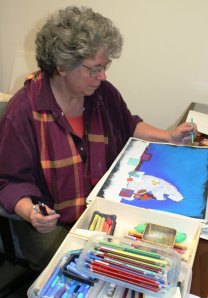
{Suzanne Bloom At Work In Her Studio}
Suzanne Bloom was born mid-century in Portland, Oregon, which accounts for her love of overcast days. She moved to Queens, New York in time to finish kindergarten. Her first book We Keep a Pig in the Parlor was published in 1988. She has authored and illustrated many more books since then including The Bus for Us (2000) and the popular Goose & Bear series, which includes A Splendid Friend Indeed, Treasure, What About Bear, Oh! What A Surprise!, Fox Forgets, and her latest, Alone Together. She has been given a Theodor Seuss Geisel Honor Award and has been selected for the Texas 2×2 list of 20 best picture books (twice). She currently lives in upstate, New York with her husband in the house they built 34 years ago, down a dirt road and on a hillside. She has two grown sons, one cat, and one dog. To learn more about Suzanne, please read the interview I did with her back in 2010, or check out her website: www.suzannebloom.com.



Author/Illustrator Suzanne Bloom
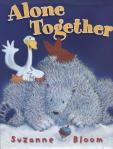
Hello future (traditionally) published picture book authors. As promised, I have author/illustrator Suzanne Bloom back this week to help me help you along your path to publication. If you are an aspiring picture book author, you may feel as if you will never be published. I know, I’ve felt the same way. And as a new picture book author (yes, I still consider myself new because even though I have been writing for nine years, I just signed my first contract last year and my book is not yet out), I wonder if I will ever publish another. So I understand your frustration. You may be wondering if there’s something you could be doing to move you further along. I wonder what Suzanne thinks? Let’s find out.
Suzanne, what could an aspiring picture book author (or illustrator) do to help them break in?
Are you attending conferences or workshops? This is a good way to meet authors, illustrators, editors, art directors, and agents. There may be an opportunity to have a manuscript or portfolio reviewed. Do you have a critique group? Have you thought about trying a different genre, or submitting to children’s magazines? Have you visited the book store and studied the current crop of picture books, chapter books or novels to see what is being published now?
Great advice! And I would add that there are a lot of fairly recent books on writing, illustrating, and publishing children’s books that offer tons of useful information. Check your local library. Also, I recommend joining professional organizations such as the Society of Children’s Book Writers and Illustrators (SCBWI) and the CBI Clubhouse. And don’t forget the Children’s Writer’s & Illustrator’s Market book. It contains helpful articles, as well as listings of publishers, agents, contests, conferences, and more.
Suzanne, how long should an aspiring picture book author (or illustrator) keep trying before they throw in the towel?
How many towels do you have? It was 10 years between my second and third book. I would drive by a fast food restaurant with a NOW HIRING sign out front and wonder if that was meant for me. A sensible person would have sought gainful employment; with benefits and a retirement plan. I opted to become a visiting author instead. I found a balance between the solitude of the studio and the lively exchange of ideas with young students. Many suggestions from grade-schoolers have shown up in my illustrations, like the volcano and the snake in My Special Day at Third Street School by Eve Bunting. I decided that if I couldn’t make a living writing, I could make a living talking about writing.
And in between talking about writing, Suzanne kept on writing and submitting and writing some more. And I’m so glad she never “came to her senses” because now there are nearly twenty fabulous picture books with her name on them, and I’m positive she hasn’t thrown in her last towel yet. So don’t give up, aspiring authors. You can be published too! It just takes time, patience, and following good advice from those who have been in your shoes.
Come back next week when I ask Suzanne how she handles rejection letters and harsh critiques.

{Suzanne Bloom At Work In Her Studio}
Suzanne Bloom was born mid-century in Portland, Oregon, which accounts for her love of overcast days. She moved to Queens, New York in time to finish kindergarten. Her first book We Keep a Pig in the Parlor was published in 1988. She has authored and illustrated many more books since then including The Bus for Us (2000) and the popular Goose & Bear series, which includes A Splendid Friend Indeed, Treasure, What About Bear, Oh! What A Surprise!, Fox Forgets, and her latest, Alone Together. She has been given a Theodor Seuss Geisel Honor Award and has been selected for the Texas 2×2 list of 20 best picture books (twice). She currently lives in upstate, New York with her husband in the house they built 34 years ago, down a dirt road and on a hillside. She has two grown sons, one cat, and one dog. To learn more about Suzanne, please read the interview I did with her back in 2010, or check out her website: www.suzannebloom.com.



Author/Illustrator Suzanne Bloom

One thing I really love to do here at Frog on a Blog is help other picture book writers, especially those who are new or aspiring authors. That’s why I’ve enlisted one of my favorite authors and illustrators (and friend), Suzanne Bloom, to help me offer words of encouragement and wisdom to all of you who may be feeling discouraged. We’ll hear from Suzanne in a moment. First, allow me to tell you a bit of my own publishing story.
After eight years of trying, I was finally offered a contract last year for one of my picture book stories, and I have a second story soon to be published in digital format. Depending upon how you look at it, you are either thinking Wow, that was a really long time or Hey, that’s great. Both thoughts are technically right. But believe me when I tell you that those eight years of waiting and hoping, and collecting rejection letters, were also discouraging. I considered giving up many times. I questioned my writing ability and even my worthiness to be published. But I didn’t quit because I love writing picture book stories and my dream was to be published. And now, I am so glad I didn’t give up.
And I don’t want you to give up either. That’s why, once a week for the next seven weeks, I will pose questions to Suzanne about how to handle rejection, how to combat writer’s block, how to keep from getting discouraged, and more. My hope is that you will find encouragement to continue on your own personal path to picture book publication.
I will post the first question next week. Now, let’s hear from Suzanne:
139 words, 300 words. So few words. How do you make them count? How do you make us care about a character? It may be that all the ideas have been used, but not all the stories have been told. Borne of your observation and experience, what will you bring to the page?
Whether we are wordless or wordy, scribbling or sketching, we face similar challenges and frustrations. My own creative process feels like dancing with a phantom, in the dark. I’m not sure where it will lead but I’ve decided to trust and follow. My stories are small, but their emotional truth is big.
Thank you, Suzanne! I can’t wait to hear more from you!
Suzanne Bloom was born mid-century in Portland, Oregon, which accounts for her love of overcast days. She moved to Queens, New York in time to finish kindergarten. Her first book We Keep a Pig in the Parlor was published in 1988. She has authored and illustrated many more books since then including The Bus for Us (2000) and the popular Goose & Bear series, which includes A Splendid Friend Indeed, Treasure, What About Bear, Oh What A Surprise, Fox Forgets, and her latest, Alone Together. She has been given a Theodor Seuss Geisel Honor Award and has been selected for the Texas 2×2 list of 20 best picture books (twice). She currently lives in upstate, New York with her husband in the house they built 34 years ago, down a dirt road and on a hillside. She has two grown sons, one cat, and one dog. To learn more about Suzanne, please read the interview I did with her back in 2010, or check out her website: www.suzannebloom.com.


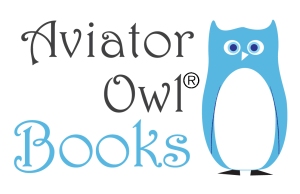 Today’s interview is with a young entrepreneur and college student who has become a huge inspiration to me. S.A. Porcher is one of the creative minds behind Aviator Owl Books Inc., a company devoted to sparking imagination in children while also raising awareness of and contributing to charitable causes. S.A. Porcher and her partner, Chris Bill, have pledged to donate a portion of the proceeds of the sales of their picture books, eBooks, and other products to causes such as First Book and The Make-A-Wish Foundation. They are also dedicated to creating quality books for children that entertain and educate. I’m excited about Aviator Owl Books. I’m convinced it’s a rising star and I’m happy to share its story with you. Read on to learn more about S.A. Porcher and AO Books.
Today’s interview is with a young entrepreneur and college student who has become a huge inspiration to me. S.A. Porcher is one of the creative minds behind Aviator Owl Books Inc., a company devoted to sparking imagination in children while also raising awareness of and contributing to charitable causes. S.A. Porcher and her partner, Chris Bill, have pledged to donate a portion of the proceeds of the sales of their picture books, eBooks, and other products to causes such as First Book and The Make-A-Wish Foundation. They are also dedicated to creating quality books for children that entertain and educate. I’m excited about Aviator Owl Books. I’m convinced it’s a rising star and I’m happy to share its story with you. Read on to learn more about S.A. Porcher and AO Books.
Q. Can you tell me a bit about yourself and what inspired you to start Aviator Owl Books?
S.P. Sure! I’m 24 years old, I love being outside and I love to learn new things. I was raised on a steady diet of imagination, curiosity and science, which is probably why it is rare for me to find a subject that I don’t enjoy (and also why I was always into trouble as a child – sorry Mom). I have always had ideas for stories randomly bubbling up in my head, but it wasn’t until college that I started to act on them. The original designs for Aviator Owl were born the summer before I left for Purdue University, and I never thought it would go further than digital images that I sold on a site called Zazzle. The five owls were created specifically to be sold on that site, and I had never really considered it more than a fun summer project.

Meet the five owls.
Only later was it recommended to me that I write a children’s book, and The Aviator Owls Learn Their ABCs was born in the fall of 2010. At the same time I was working on a side project called Write for the Cause – which was (then) completely separate from Aviator Owl. The first book was My Dragon Humphrey, which I wrote specifically with HALO Animal Rescue in mind. I got pretty serious about Write for the Cause, and had all but given up on Aviator Owl to focus on it.
As luck would have it, I met Chris Bill in the fall of 2012, and after a lot of discussing and planning, we officially went into business together in October 2013. He loved the idea of writing books to promote causes, and with his background in Computer Graphics Technology, we Frankensteined all of our talents into one entity that we could both get behind. We decided to merge the Aviator Owl characters with the idea of writing books for causes. Through research we discovered that children today enjoy books in print and online, which ties into Chris’s background of CGT quite nicely. We also found that kids hate learning unless it’s done in a way where they have fun. Put simply: they like games. All of these put together and we came up with Aviator Owl Books Inc. So your question “What inspired me to start AO Books?” is tricky to answer. I wanted to help children learn, but both Chris and I also wanted to do something we love. I think what we came up with fits both.
Q. What is the goal or mission of Aviator Owl Books?
S.P. AO Books seeks to inspire and educate children through print books, eBooks, online games, and apps. (Or at least that is what we are hoping for in the future. Right now we only have print books and eBooks.) We want to help cultivate children’s imaginations, and also raise awareness of important causes. Right now we support HALO Animal Rescue, First Book, and the Make-A-Wish America, but we hope to show our support for many more in the future.
Q. Who writes, illustrates, and publishes the books you sell?
S.P. I do. I was born to make up stories, and I’ve been writing them down since I knew how. (Although when I was younger I also included illustrations that make no sense to anyone anymore.) I fell in love with drawing when I was in high school and taught myself Adobe Illustrator the summer before college. I love having the ability to come up with a story, write it, and illustrate it on my own because it gives me a freedom that I know a lot of other writers and illustrators are forced to give up. That being said, I do have story ideas that demand a certain type of illustrative style, and I’m not talented enough to fulfill exactly what I want. I am trying to teach myself, and I practice almost every day, but if the time comes to begin serious work on those stories and I don’t feel prepared to complete adequate illustrations, then I have no problem hiring a freelancer to help us out.
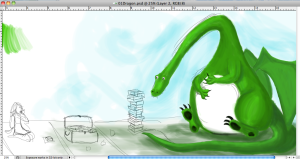
S.A. Porcher’s drawing process.
As for the publisher: AO Books goes through Amazon’s CreateSpace. We purchase our own ISBNs and barcodes and put them on the covers and then upload all of our files onto our CreateSpace platform. Eventually we would love to publish our own books in-house, but that’s something that we’ll have to address as we grow.
Q. How do you decide what charities to contribute to?
S.P. All three of the charities we support now have come to us differently. We did research to find an organization that made sense for our ABC book, and First Book was a perfect fit. HALO Animal Rescue was chosen because Ellen DeGeneres mentions it on her show occasionally, and she’s a huge inspiration to me. The most recent charity we chose was the Make-A-Wish Foundation, and we chose that to go along with the book called The Boy Who Played With Stars (which was just launched). I came up with the idea for that book in a (dreadfully boring) English course. I was doodling stars and thinking that everyone should be able to do what they want to do in life, even if it seems crazy. A boy who literally goes into the sky to play with the stars is a bit far-fetched, but the idiom is very common. Shoot for the stars, and dream big. Chris and I have both known people who participate in Make-A-Wish, so it seemed like a no-brainer for that book. Of course, we also accept suggestions!
Q. What books are currently available and how can they be purchased?
S.P. All three books can be purchased at Amazon.com.
Links:
The Aviator Owls Learn Their ABCs: http://www.amazon.com/Aviator-Owls-Learn-Their-ABCs/dp/0988636824/ref=sr_1_13?ie=UTF8&qid=1401761201&sr=8-13&keywords=s.+a.+porcher
The Boy Who Played With Stars: http://www.amazon.com/The-Boy-Who-Played-Stars/dp/0988636832/ref=sr_1_10?ie=UTF8&qid=1401761181&sr=8-10&keywords=s.+a.+porcher
My Dragon Humphrey: http://www.amazon.com/My-Dragon-Humphrey-S-Porcher/dp/0988636808/ref=sr_1_12?ie=UTF8&qid=1401761201&sr=8-12&keywords=s.+a.+porcher
Q. Do you have other items available for purchase as well?
S.P. We currently offer free printable activities, which we upload to our website two times a week (Mondays and Thursdays). Those can be accessed here: http://blog.aviatorowl.com/activities/all/.
We also have a very small Zazzle storefront. It used to be much larger but after our trademark was approved, we took everything down and slowly we are uploading new designs with the trademark. There you can purchase clothing, posters, iPhone cases, etc. Eventually we’d love to expand to stuffed animals and educational toys, but for now we’re more focused on the books and expanding those into interactive online pages, even if they are just seasonal. For example, this past Christmas we set up a site where kids could write a letter to Santa.
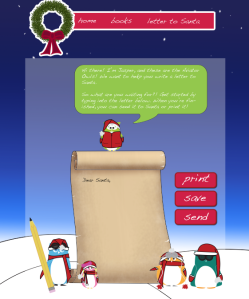
A Christmas project at AO Books.
Q. As a full-time student, how do you juggle your academic life and the responsibilities involved in running Aviator Owl Books?
S.P. Very carefully, and sometimes not well! (There are a lot of sleepless nights involved.) My three majors are Industrial Design (aka Product Design), English, and Creative Writing, and my two minors are Entrepreneurship and Psychology. Every day at school I take classes that are directly applicable to AO Books, so that helps keep me motivated to learn new things, which in turn helps keep my grades up. On the flip side, AO Books benefits from what I learn. Of course, there is the occasional class that bores me to death and those are the classes in which you can find me at the very back doodling, drafting, editing, or anything else AO Books needs done.
I often have people tell me that I’ve “bitten off more than I can chew”, or whatnot, but I think part of keeping everything from spinning into chaos is keeping the right perspective. I keep in mind that I’m very lucky to be in school, which is something some students take for granted. I know a lot of college students are notorious for procrastinating, but my version of procrastinating is working on Aviator Owl because that’s what I love. I love coming home to sketch and think about otherwise impossible things (like a boy who plays in the night sky). I know exactly what I want to do and really college is just teaching me how to do it.
Q. Where can people go to find more information about Aviator Owl Books?
S.P. Our main website can be found at blog.aviatorowl.com. At http://www.zazzle.com/aviatorowl we have some products (and we upload new designs as we create them). And of course people are free to email me at [email protected], or the company at [email protected]!


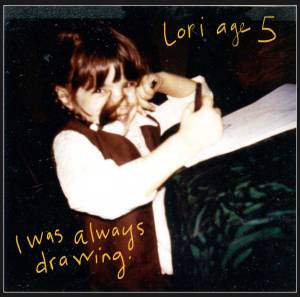 I am incredibly pleased to present this awesome interview with the author and illustrator of Maple, Lori Nichols. After I requested the interview, and she accepted, I was super eager to read her responses to my questions. She did not disappoint! Lori’s answers are detailed, personal, and interesting, with a sprinkling of humor mixed in. You are going to love this interview!
I am incredibly pleased to present this awesome interview with the author and illustrator of Maple, Lori Nichols. After I requested the interview, and she accepted, I was super eager to read her responses to my questions. She did not disappoint! Lori’s answers are detailed, personal, and interesting, with a sprinkling of humor mixed in. You are going to love this interview!
Q. Can you tell us a little about your process from start to finish when you created Maple?
L.N. The process of creating Maple was organic. To start, I’d have to go back about 45 years. I have always loved trees. We had a beautiful Maple tree in our yard growing up, and I played under it all the time. This is one of my favorite, and earliest, memories from my childhood. I remember the moss on the trunk, digging for worms, big black ants that I’d let crawl on my arms and legs, the knobby feel of the bark. Most importantly though, I remember the canopy of the tree. It truly was magic for me to sit under my tree and look up at the sky between the leaves.
When I had my own daughters, my husband and I planted a tree for each one. They were actually oak tree saplings (my husband’s favorite tree) from the yard where he grew up in West Virginia. We watched our children and their trees grow together. So began the story for what is now Maple. But in a strange way I didn’t set out to write this story. It came organically from a sketch here, a drawing there, and from watching my children play outside.
One day in 2010 my daughter Zoe was eating grapes. She came into my studio and held up the bare grape stem and said “Look Mom, a tree.” The grape stem did look like a tree, so Zoe and I scanned the grape stem into the computer and scanned some Japanese Maple leaves from the tree in our yard and began doing fun things in Photoshop. I then plopped a small pencil drawing of a little girl in with our tree creations and wrote “Maple loved her name.” This was another “growth ring” in Maple’s story.
I showed the drawing to my agent and she encouraged me to work it into a story. This process started in July and took a few months. Then in November we were ready to pitch it, and Nancy Paulsen Books picked it up. Nancy Paulsen, Cecilia Yung and Marikka Tamura directed me over the next year on changes that would help the story. It then took another year for the book to be printed and marketed. The rest is history!
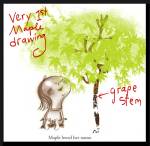


Q. What are the pros and cons when it comes to illustrating your own book?
L.N. Pros: It’s completely driven by my imagination.
Cons: It’s completely driven by my imagination.
Q. What was your experience like working with the editors at Nancy Paulsen Books?
L.N. Nancy Paulsen is lovely and incredibly gentle in her approach with me. She understands and respects the creative process and seems to know just the right amount of direction to give. Not giving me too much or too little direction allows me to still take ownership of the book. I feel incredibly lucky that this was my debut picture book and that I had such a wonderful mentor. I also have a sticky note on my computer that says “Listen to your voice, I trust it.” Cecilia Yung, one of my art directors on Maple, said this to me and I try to take this advice when I start doubting myself.

Q. Can you tell aspiring children’s book authors and illustrators what it’s like to work with a literary agent?
L.N. My literary agent rocks! I think she’s an alien from another planet though, because I have no idea when (if ever) she sleeps. Her name is Joanna Volpe of New Leaf Literary, and we started working together about four years ago when she saw my portfolio at a NY SCBWI conference. She contacted me after the conference asking if I needed representation. Joanna has reminded me of my own voice and vision, and has encouraged me in so many ways. She gives me great feedback on my manuscripts and always provides me with the direction I need to elevate my work to the next level. I came to the picture book business by way of illustration and page design so I felt vulnerable when it came to telling my stories with words. She believed in me. Plus, there’s no question that’s too mundane or insignificant for her. She approaches all my questions with respect and even though she’s extremely busy she’ll get back with me at the drop of a hat. Yep, she’s an alien from another planet.
Q. What authors or illustrators have been inspirations to you?
L.N. OK, this is a question that might take a lot of time to answer. I’ll try to narrow it down. Here is the short list: Tomie dePaola, Roger Duvoisin, Mary Blair, Kevin Henkes, Olof and Lena Landstrom (my all-time favorite illustrator/writer team EVER!), William Steig, Barbara Cooney (love!), Maurice Sendak, Sandra Boynton, David Ezra Stein, and my three girls.

Q. Why do you believe picture books are important?
L.N. I love this question because it’s something I feel very passionate about. As a new mother, I began reading to my daughter when she was very, very young. Days home from the hospital we would snuggle up to one another and I would read to her for as long as she’d let me. She seemed to crave my voice and even though she was too little to focus on the pages, she loved this time (and so did I). It became a long love of reading for her, and then for my other two daughters. But first, it was a safe, warm, soft, happy place to hear their mother’s (or father’s voice). For me it was a beautiful bonding experience. I also think picture books are journeys for children, journeys where a child can explore a world in a safe environment…on the lap of a caregiver.


Q. What exciting projects are you working on right now?
L.N. I’m currently working on some companion books to Maple that I’m really excited about (see next question). Also, I’ve just finished illustrating the wonderfully hilarious book This Orq. (He Cave Boy.) by the talented author David Elliott (Boyds Mills Press, September 2014).

Q. What does the future  hold for Maple and her little sister Willow?
hold for Maple and her little sister Willow?
L.N. I have a companion book to Maple titled Maple and Willow Together coming out November 2014. I am also working on a third companion book with a tentative publish date of September 2015.
Q. Where can fans go to learn more about you and your work?
L.N. http://www.lorinichols.com, Lori Nichols on Facebook, Maple on Facebook, lorinicholsbook on Instagram, @lorinicholsbook on Twitter
Q. Any closing thoughts for fans?
L.N. Thanks for taking the time to read this and for loving Maple (and Willow) as much as I do.





































Terrific advice, Suzanne! Wonderful post.
LikeLike
Thanks for commenting, Robin! Suzanne is such a nice lady and so kind to answer all my questions. These posts would not have been the same without her.
LikeLike